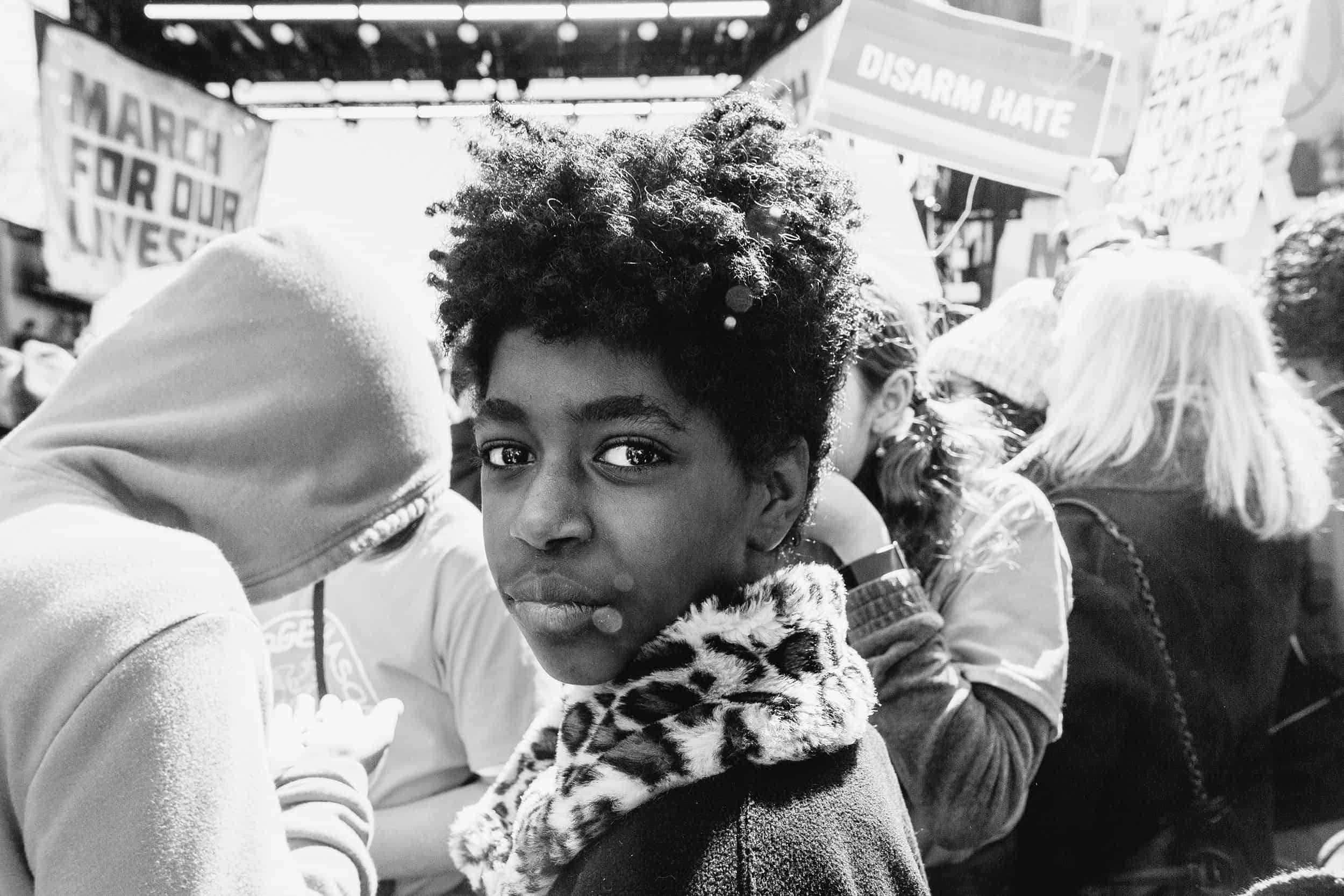
Child Safety In The Wake Of Recent School Shootings
Written by Kate MacLean
Photography by Image Via Cosmopolitan
As a parent you know that your child’s safety trumps any concern you’ve ever had. To such a degree, concerns for your child’s safety makes any other trivial by comparison. It is thusly understandable, given the recent high-profile school shootings, that the very topic has rocketed to the fore of every parent’s brow. The actual prevalence of school shootings doesn’t factor in this fear. The fear is a natural and emotional response to something we, as parents, can relate to. The simple logic follows like this: I have children. They go to school. School shootings happen. They seem to be more frequent. My child is at grave risk.
Mass shootings capture the attention of the nation and media for longer than most modern news creatures. They are so horrific in their violence and in their randomness that we can’t help but—mouths and hearts agape—listen and watch and read and share more of the coverage. The media knows this, they pay attention to when we pay attention. This fuels more coverage—which fuels more advertising dollars—and this increase in coverage further fuels our fear.
But, after the emotional response to something as unimaginably tragic as the shootings in Parkland and Newtown, it is important to take a few steps backward, away from the rawness of the event and check the reality of the horror. It should be noted, before we proceed any further that the author of these words here does not wish to diminish the horror of the events. These are inconceivable tragedies that every parent can’t help but fear. But, what is the reality of it happening to you? Roughly, you have a 1 in 614,000,000 chance of your losing your child to gun violence at school. Since Columbine in 1999, there has been a total of approximately 200 students killed by gun shot, while in school. For reference, over 12,000 children die annually from unintentional injury (like car accidents) and every winter 100-300 children are killed by influenza. These statistics don’t do much to calm a worried parent. In fact, the aforementioned author of this article had to take a dizzying step away from her computer after researching “most common cause of death in children”. The topic alone can make one feel sick in worry and dread.
More importantly, though, than the statistics on car accidents or flu is the one that reveals that over 1,600 children are killed by guns in the U.S. every year. To underline that difference: 200 students have been killed in school shootings since 1999, and then every year, eight times that are killed by guns elsewhere in their daily lives. It isn’t that schools are inherently vulnerable places, it is that guns are inherently that dangerous.
The teenagers of Parkland get this, and they have been perhaps the sole voice of reason in the weeks following their school’s massacre. One week after the shooting, they respectfully and forcefully asked for their state’s legislature to enact gun legislation, and against all probability, Florida did respond positively to some of their demands. In early March, Governor Rick Scott signed the Marjory Stoneman Douglas High School Public Safety Act which, among other things, raises the minimum age to buy a firearm from 18 to 21. In mid-March the same teenagers called for a National Walkout of schools for 17 minutes to commemorate the 17 deaths at their own school a month earlier. They have organized and done so peacefully. They are not acting on fear, but rather on the insistence that gun violence can be stemmed with sensible gun control and the belief in the power of their collective young voice.
From 1996 to present day, there has been an inexcusable silence—an effective ban—on federal research on the effects of gun violence. In the 1990s, the NRA accused the CDC of being actively pro-gun control and under a Republican-controlled congress—and an NRA-sponsored bill—there passed the Dickey Amendment which decreed “none of the funds made available for injury prevention and control at the Centers for Disease Control and Prevention may be used to advocate or promote gun control.” Fearful of any resulting lawsuits from the powerful NRA, each successive CDC head made it policy to read this as an effective ban on gun research. After the Newtown shooting, President Obama demanded—via executive order—that the CDC return to its research on gun violence, but the CDC refused, insisting they would need an appropriation from Congress to do so. If there was ever an egregious example of collusion between our federal government and the National Rifle Association, this would be it. Many scholars have called the gun violence in our country a public health emergency. In world reports, we stand at number 11 in the list of countries with the most gun-related deaths. The company we keep in that list includes mostly countries where there is ongoing strife and record poverty.
If funding could be released to allow for proper studies of this issue—without the interference of the NRA—then proper studies could lead to proper action on the state and federal levels. We cannot afford to be reactive in the way we approach this issue. We can no more afford to arm teachers in our classrooms than we can afford to take away and destroy each and every one of the 300 million guns in the U.S. The answer must lie in a thoughtful, educated, and well-researched compromise; one that makes the attainment of a gun harder than getting your license, and one that eliminates weapons whose sole existence is to kill humans.
Realistically, we are years—and an entirely new administration and Congress—away from effective gun control legislation. Some Senate Democrats are advocating for a re-appropriation of money for this research, but their near-total lack of control on the Hill makes this unlikely. You can—and should—always call your Senator to tell them your thoughts on this very topic. Find out your representative and senator names, then call the Capitol switchboard at 202-224-3121.
Right now, parents are effectively on their own to ensure the safety of their children, and with this comes a great responsibility both to your child’s physical safety, but also to their psychological and emotional well-being. Today, we are encouraging you to have age-appropriate conversations with your child, and frank and open ones with your school’s administration. Take control of your fear, harness it, and direct that towards the concrete and the real.
To have an appropriate conversation with your child :
- Check yourself. Make sure your anxiety and emotion are in control when you talk to your children. Your palpable fear will only make them more scared. They need to know that they are safe, no matter what your fears are. Remind yourself of the statistics, remind yourself of the reality.
- Determine what they are being told at school. If they have active shooter drills at your school, this is all the more important. Active shooter drills have been shown to cause anxiety and depression in kids. Get your kid’s version of this, and that of the administrators and teachers.
- Ensure their safety. As parents your number one responsibility is to keep your kids safe. When the realities of an issue are out of your control, you need to make them feel safe, even if you do not.
- Encourage your kids to talk. Ask them about their fears and how the drills make them feel. Ask them what they have heard from their teachers, from their friends, from other adults, from the media.
- Monitor and limit media. Try to limit their exposure to the media’s coverage on these events. No matter their age, they are children, and they are even less able than we to filter through the fear mongering and the nuances of such an event.
- Talk to your child’s school. Find out what physical procedures are already in place to protect the kids (locked doors, visitor sign-in) and what, if any, psychological procedures they take to mitigate the stress this topic takes on young minds.
Share this story




